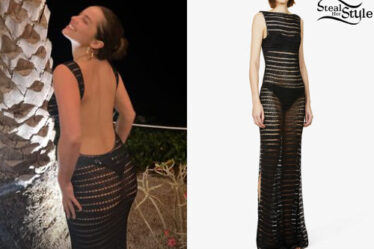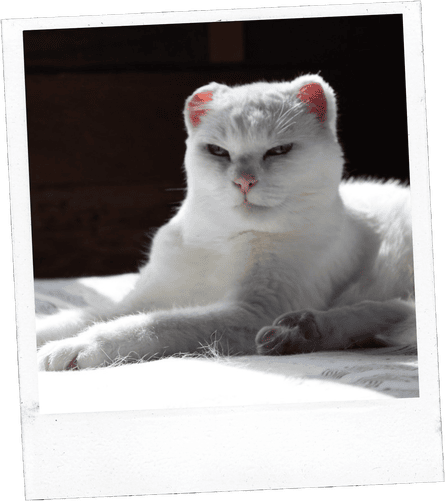
Shortly after my cat Mr Bell died, I contacted Angela Kirkpatrick. I needed Mr Bell – a delightful cat famous for his cropped ears and his ongoing feud with the refrigerator – to live on in some way, and I knew Kirkpatrick, a jeweler, could help me do that.
Together, we designed a reliquary ring with Mr Bell’s ashes and hair to commemorate him. The end product was a thin silver band decorated with nasturtium leaves – a nod to the flower-covered house we lived in when I first brought him home – and a yellow stone, through which the hair and ashes are visible. I wear it often, and when it’s not on my hand, it sits in a ring tray next to his urn.
The process helped me grieve, but it also sent me down a rabbit hole of pet memorials and rituals that I haven’t been able to emerge from, not least because my cats keep dying. Along the way I discovered a network of people – including taxidermists, jewelers, tattooers, fiber artists and good old-fashioned pet cemetery operators – who are providing pet owners with a myriad of aftercare choices.
This is a nation of pet lovers, after all, and that love persists beyond death.
“In this space, we don’t judge when it comes to other people’s grief,” says Joslin Roth, founding owner of Resting Waters, a pet funeral home in Seattle that offers aquamation, a process that uses a solution of heat and lye to reduce remains to bone (it is also legal for human remains in a growing number of states). “All grief is honored and valid. If it doesn’t negatively affect you, it’s not your problem.”
Lisa Egan, guardian to Betty, a spirited black cat and steadfast companion, had a memorial necklace made with her cat’s fur. Spencer Hughes has his feline in his freezer, looking forward to the day he can afford to get her skeleton cleaned and articulated, or assembled. Victoria Beverly has the cremated remains of her cat Reginald on a shelf, after being unable to attend his euthanasia because of pandemic restrictions. “M” keeps the ashes of her German shepherd inside a plush dog. Randy Potts buried his dog Nancy under a rhododendron in February 2020, and “couldn’t bear to open the bag” the vet sent her home in. The memoirist Lilly Dancyger got a memorial tattoo of her beloved cat Lady.
Some of the most eccentric practices might make some feel uneasy – such as skull preservations, keeping fur in freezers or, perhaps most surprising of all, skeletal articulation. But this diversity of choices reflects the different sentiments of pet owners, who have to make decisions for their companions while experiencing disenfranchised grief – the sense that a loss is undervalued or less important because it is a pet, even when it consumes their whole universe.
Some pet guardians are even doing it for themselves – and not just in the time-honored tradition of backyard burial. I call up my colleague Ace Ratcliff, a former mortician and current artist and writer. Along with their veterinarian husband, they have seen a parade of pets over the years – a common phenomenon for veterinarians, who sometimes end up with animals surrendered to their clinics, many of which have significant health issues. When their cat Moxie died after a rapid and inexplicable illness, Ratcliff and their husband decided to perform a necropsy. “He ultimately decided that the process was a better experience for him than the not knowing,” Ratcliff said, though that didn’t make it easy.
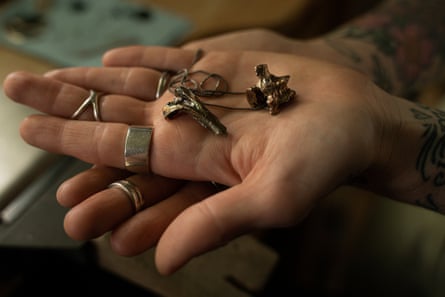
They performed the procedure in their own home, and sometimes had to take breaks. “It really became a very educational practice. It was fascinating to see the way the parts worked, to see the parts of her body where you could see sickness and illness,” Ratcliff says, their voice aglow with fascination and reverence. One particularly intriguing element involved inflating the alveoli of the lungs, creating a strangely beautiful flutter of life in the video Ace sent after we talked. When they finished, determining that Moxie had died from an obstruction, they were left with the question of what to do with what remained.
The couple decided they wanted to preserve Moxie’s skeleton, but instead of sending her out, Ace began the long process of maceration, in which soaking in repeated changes of water over the course of months separates the soft tissue from the bone, eventually leaving only bones behind. Another popular method of skeletonization relies on a colony of dermestid beetles to remove the soft tissue, but it requires maintaining said colony, and it is not always possible to process the remains of euthanized pets or those who took certain medications prior to death.
Moxie’s bones will need to be further cleaned and processed to remove grease and yield a fully skeletonized cat, with bones that can be articulated, stored in a box, or kept in other ways. (If you’re wondering where those changes of water are going, Ace’s Florida yard is well-hydrated.) Ratcliff is also macerating other animals and parts, including a leg amputated from a pet dog, Vix, and the skull of another cat, Whimsy – “the best cat in the entire fucking universe”. They refer to these projects, part of the mourning process, as “holy”, while noting that it’s definitely not for everyone.
“It’s a gnarly soupy gross concoction of death,” they say, commenting that sometimes they’re out in the yard and “whoo-ee, this smells like dead things”.
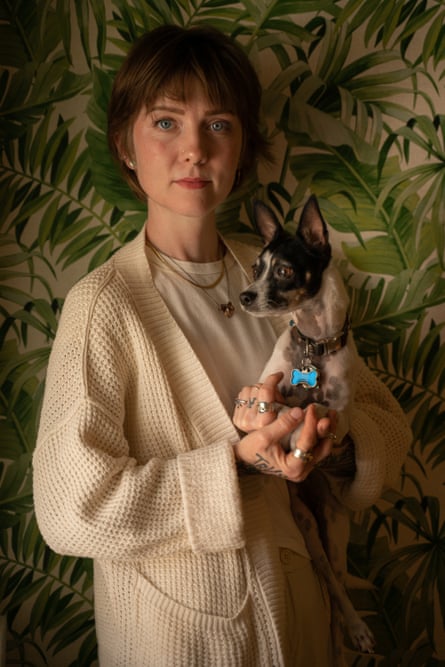
Ace’s love for their animals shows through the intimate handling of their remains, from casting the vertebrae of a beloved dog in bronze and wearing it as jewelry to keeping another dog in their home for three days after death to give them time to mourn, rather than rushing the remains to a crematorium.
“It was really comforting to be able to get up in the middle of the night and walk over, put my hand on him, still touch him,” they say, while also noting that this approach to mourning was new to their husband, who was offered little training in vet school for managing the aftermath of euthanasia beyond whisking the body into the freezer to await collection. “Death has become not just something we have removed from the house, but socially removed from wanting to think about.”
The level of mourning intimacy that Ratcliff prefers may not be for everyone, but they say: “We are so trained to deny the experiences of death that we aren’t having these conversations or giving people the opportunity,” arguing that a conversation about end-of-life care should happen from the start of a relationship with an animal, allowing people to think about decisions such as the level of medical intervention they want to provide, whether they want their animals euthanized at home, and what they want to do with the remains.
Thinking ahead and facing death can feel ghoulish, but it allows people to make more informed decisions. Many of us haven’t thought or prepared for the loss of our pets, and an unprepared death can feel like a shattering, especially with pressure to make a decision about the remains as quickly as possible (my own vet handed out a tag for cremation with the euthanasia consent form).
In her TikTok debut on New Year’s Eve 2020, Pot Roast the cat is a fluffy white and black cat with a tolerant expression, lying on her back as her guardian, known as Pot Roast’s mom, rubs her chest (Pot Roast’s mom asked to be referred to pseudonymously to protect her privacy). Pot Roast’s paws lie loosely on her hands, and she has no idea that she’s about to turn into an internet phenomenon with more than 1 million extremely dedicated followers.
Like most of the famous cats of TikTok, Pot Roast had a “thing” that made her famous. (Other TikTok cat “things” include licking graham crackers, being orange, smellin’). Pot Roast, in all her scruffy glory, looked like taxidermy, thanks to her stillness in many videos, and commenters weren’t shy about remarking upon it. Her “dead” status became a running joke on the channel until 2022, when she actually did die after a brief and unexpected illness.
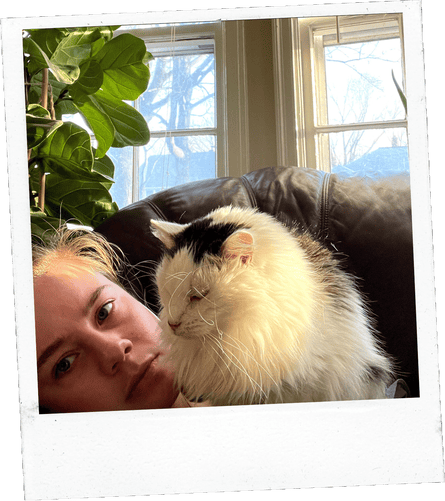
In videos from her final days, it’s clear Pot Roast’s mom is bereft, navigating the challenging experience of being a public figure experiencing an awful event and wanting to speak to followers, who at times crossed the lines with comments on Pot Roast’s health and her mom’s choices. Thanks to the parasocial nature of TikTok, where followers form deep connections, the loss felt personal.
But Pot Roast’s journey was not over. She headed to Oracle Natural Sciences and the gentle hands of Alessandra Dzuba, the taxidermist preparing and articulating her skeleton, a process that can take up to two years. (In the short term, Bot Roast, a truly terrifying animatronic cat, will be holding down the fort.)
“She has the cutest bones in the world. I know it for sure!” Pot Roast’s Mom says over Zoom, her face alight about her decision to get a skeletal preservation and deeply appreciative of Dzuba’s work and care, which have been an important part of the grieving process. She tracks every step of Pot Roast’s journey, requesting updates that include images of her body in various stages of processing (such as, for example, in a tank with Dzuba’s dermestid colony) that other people might find off-putting. Even when Pot Roast isn’t looking her best, her mom finds the images and updates an affirming recognition of her grief; while her interest can seem macabre to some, it is also deeply rooted in love.
“Death is horrible and painful, that’s all you see. You don’t see their lives being celebrated,” she says, expressing enthusiasm and appreciation for the method of aftercare she ultimately chose, and for participating in the process.
For her, this isn’t just personal because she loved Pot Roast: she felt unprepared and didn’t know about the options available to her after her cat’s death, and she wants to make sure other people aren’t put in the same position.
Dzuba says planning ahead can reduce distress. She recommends collecting mementos before animals pass away: paw prints and whiskers, fur combings and nose prints. The best time to make aftercare decisions is before death, she says, when people have time to sit down, think about what they want, and explore options.
The comments under images and videos from taxidermists and others who work closely with remains often include expressions of horror and disgust, despite efforts to maintain a death-positive space. Some are forced to periodically battle with alleged terms of service violations and account shutdowns caused by reports from squeamish users. But growing interest has made those who offer non-traditional memorials more outspoken, and that makes them easier to find – just as I found Angela in a time of need. Instagram, TikTok, and other social media platforms include a growing array of aftercare providers educating the public about their work.
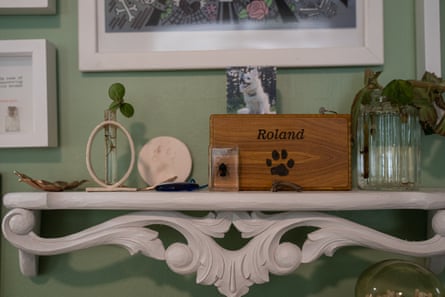
The demand is here: Resting Waters was forced to temporarily stop accepting taxidermy commissions because its provider was overwhelmed. Many providers noticed an uptick in demand during the pandemic, forcing them to offer referrals, start waiting lists, and educate clients about the best techniques for freezer storage. While it’s hard to quantify whether this was the result of more visibility or shifts in how we viewed animals during the pandemic, people facing mortality certainly had more time to ponder pet aftercare, and isolation intensified their relationships. “Grieving a pet is weird. From the outside, people expect it to be brief,” Dancyger says, adding that her tattoo wasn’t closure, but “having a physical marker has helped”.
Megan Devine, who runs Refuge in Grief, a grief therapy practice that focuses on grief as an experience rather than a problem to fix, says that the death of a companion animal is very undervalued in our culture. Her work includes finding ways to “fill support cups” and create room for all kinds of reactions to grief that center the griever, rather than pressures for that grief to end. Finding appropriate times and places, and avoiding “grief hijacking”, is also an important element; when people feel disenfranchised, they may drag their losses into conversations about someone else’s, causing frustration or distress. “We don’t make space for grief of any kind,” human or animal, Devine notes, creating a competition for finite resources.
Commemorations also don’t even require the subject to be deceased. The fiber artist Theresa Furrer runs Nine Lives Twine, a service that spins pet hair into yarn. (Poodle evidently “spins up nice”.) Her work relies on combed undercoat, not cut hair, in combination with other fibers. She encourages her customers to knit or crochet with the final product, although she also creates scarves and other finished works on commission.
Her interest was driven by the loss of her cat, who oversees her workshop in taxidermy form, though she says she’s not sure she would choose taxidermy again for herself.
She’s not alone in thinking ahead about what she wants for her pets, a sort of measuring of the coffin that engages with anticipatory grief –though in a twist, she won’t be spinning the fur of her two living cats: they’re hairless.


